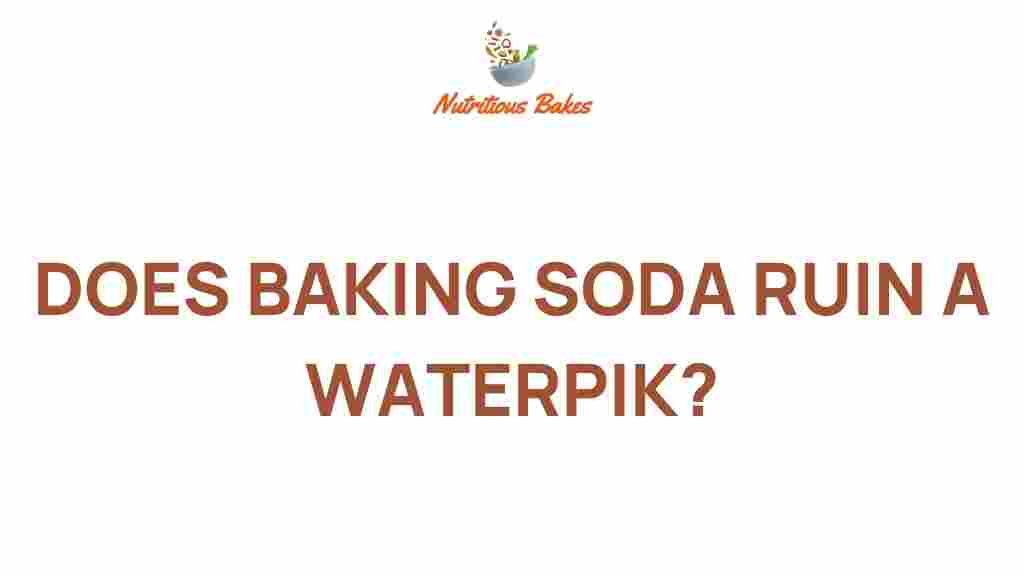The Truth About Baking Soda: Can It Damage Your Waterpik?
Baking soda, also known as sodium bicarbonate, is a versatile household item that many people use for various cleaning and maintenance tasks. One area where baking soda is often discussed is in relation to oral hygiene and dental care, particularly when it comes to its use in devices like the Waterpik. This article will explore the relationship between baking soda and Waterpik, addressing common myths, providing tips for safe use, and giving advice on maintaining your dental care routine effectively.
Understanding Baking Soda
Baking soda is a common ingredient found in many households. It is renowned for its ability to deodorize, clean, and even help with baking. In the context of oral hygiene, baking soda is often lauded for its mild abrasive properties and its ability to neutralize acids in the mouth, which can help in maintaining a healthy oral environment.
However, not all uses of baking soda are suitable for every dental device, particularly the Waterpik. Understanding how baking soda might interact with your Waterpik can help prevent potential damage and ensure optimal performance.
What is a Waterpik?
A Waterpik, or water flosser, is a dental device that uses a stream of pulsating water to remove plaque and food particles between teeth and below the gum line. It is an effective tool for enhancing oral hygiene, especially for those with braces, implants, or other dental work. However, maintaining your Waterpik is crucial to ensure it operates effectively and lasts for years.
Can Baking Soda Damage Your Waterpik?
The short answer is: it depends. While baking soda is a safe and effective cleaning agent in many contexts, using it improperly with your Waterpik can lead to issues. Here are some important points to consider:
- Abrasiveness: Baking soda is mildly abrasive. If used in excess or improperly, it can scratch and damage the internal components of your Waterpik.
- Clogging: If you dissolve baking soda in water and use it in your Waterpik, any undissolved particles can clog the nozzle or the internal mechanisms.
- Corrosion: While baking soda is not corrosive by itself, using it with hot water can alter its chemical properties, possibly affecting the materials in your Waterpik.
Myths About Baking Soda and Waterpik
There are several myths surrounding the use of baking soda with Waterpik devices. Let’s debunk some of these:
- Myth 1: Baking soda will enhance the cleaning power of Waterpik.
- Myth 2: Using baking soda in your Waterpik is an effective substitute for toothpaste.
- Myth 3: Baking soda is always safe to use in any dental appliance.
In reality, while baking soda has its benefits, it’s important to use it cautiously and as intended. Always refer to your Waterpik’s user manual for specific cleaning instructions.
Tips for Safe Use of Baking Soda with Waterpik
If you are considering using baking soda in your oral hygiene routine, here are some tips to ensure you do so safely:
- Use Sparingly: If you choose to use baking soda, limit its use to occasional cleaning of your Waterpik. Never make it a regular part of your routine.
- Dissolve Completely: Ensure that any baking soda is completely dissolved in water before use. This will minimize the risk of clogging.
- Follow Manufacturer Guidelines: Always follow the cleaning recommendations provided by the Waterpik manufacturer.
- Alternative Cleaning Solutions: Consider using products specifically designed for cleaning dental appliances.
Step-by-Step Process for Cleaning Your Waterpik
Maintaining your Waterpik is essential for optimal oral hygiene. Here’s a simple step-by-step process for cleaning your device without the use of baking soda:
- Unplug the Device: Safety first! Make sure your Waterpik is unplugged before you begin cleaning.
- Disassemble: Remove the water reservoir and any attachments.
- Wash the Reservoir: Clean the reservoir with warm soapy water. Rinse thoroughly to remove any soap residue.
- Wipe the Exterior: Use a damp cloth to wipe the exterior of the device.
- Clean the Nozzle: Soak the nozzle in a mixture of warm water and vinegar for about 5-10 minutes to remove any buildup.
- Reassemble: Once everything is clean and dry, reassemble your Waterpik.
- Run a Clean Cycle: Before using it again, run a clean cycle with plain water to ensure everything is functioning properly.
Troubleshooting Common Waterpik Issues
If you experience issues with your Waterpik, here are some troubleshooting tips:
- Low Water Pressure: Check for clogs in the nozzle or hoses. Clean as necessary.
- Noise During Operation: Ensure that the device is properly assembled and that there are no obstructions in the water flow.
- Water Leakage: Make sure that the water reservoir is properly seated in the unit.
The Importance of Oral Hygiene
While tools like Waterpik are beneficial, they are just one part of a comprehensive oral hygiene routine. Here are some essential components:
- Brushing: Brush your teeth at least twice a day with fluoride toothpaste.
- Flossing: Regular flossing helps remove plaque and food particles that brushing may miss.
- Regular Dental Check-ups: Schedule regular visits to your dentist for professional cleanings and check-ups.
- Healthy Diet: Maintain a balanced diet and limit sugary snacks to keep your teeth healthy.
For more tips on improving your oral hygiene routine, check out this guide on dental care.
Conclusion
In conclusion, baking soda can be a useful household item, but caution is needed when considering its use with a Waterpik. Misuse can lead to damage, affecting both the performance of your device and your oral hygiene. By following the tips outlined in this article and debunking common myths, you can effectively maintain your Waterpik and ensure it serves its purpose in your dental care routine.
Always prioritize safe cleaning practices and consult your Waterpik’s manual for the best results. For further information on effective cleaning methods for household items, check this resource.
This article is in the category Tips and created by NutritiousBakes Team
